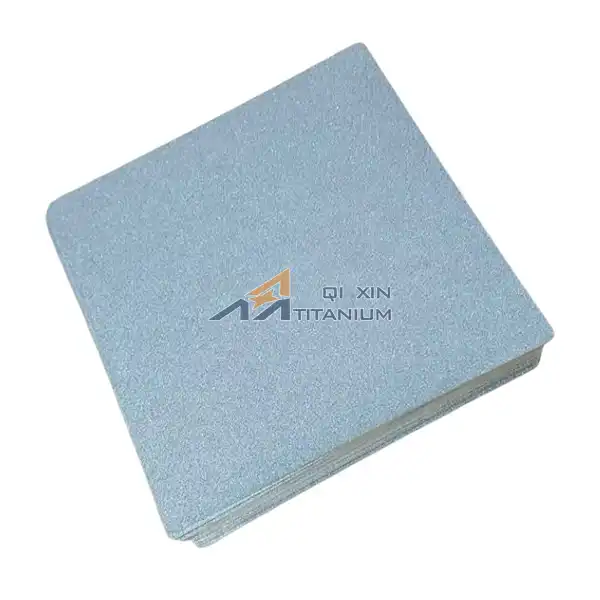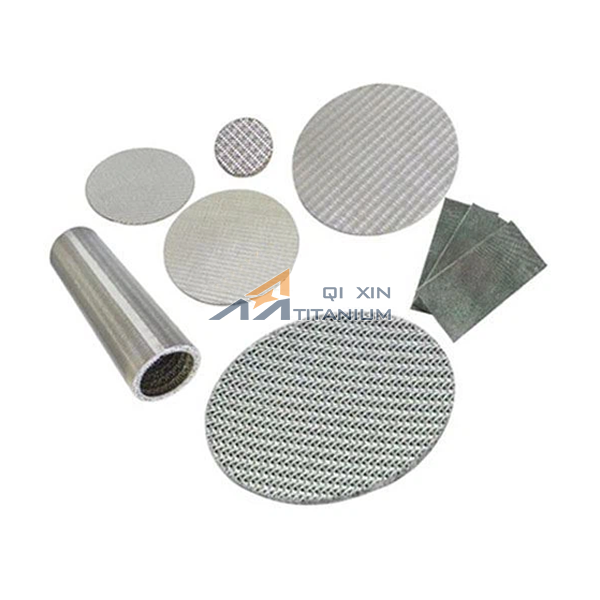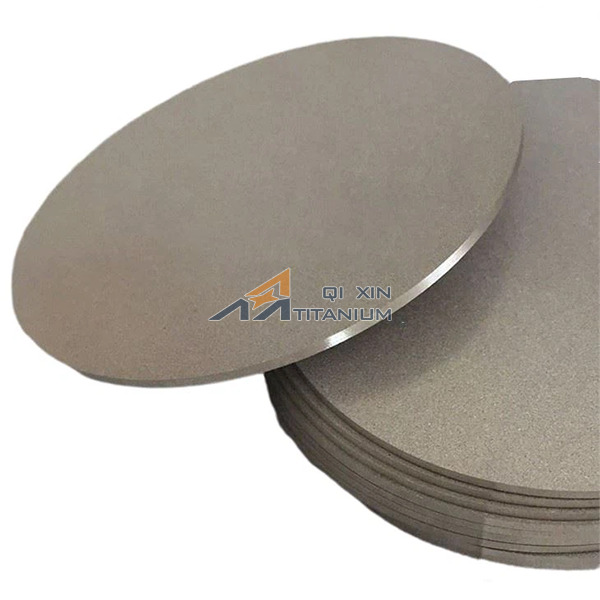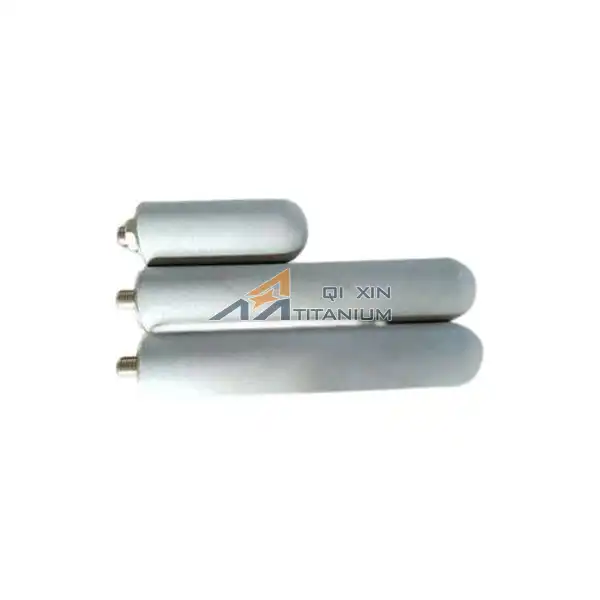Material Properties of Sintered Metal Powder Filter Cartridges Explained
2025-04-09 10:06:20
Sintered metal powder filter cartridges are advanced filtration solutions that offer exceptional performance in various industrial applications. These cartridges are manufactured through a sophisticated process of compacting and heating metal powders, resulting in a porous structure with unique material properties. The sintering process creates a robust, interconnected network of metal particles, providing excellent filtration efficiency, mechanical strength, and chemical resistance. Understanding the material properties of sintered metal powder filter cartridges is crucial for selecting the right filtration solution for specific industrial needs, as these properties directly influence their performance, durability, and overall effectiveness in challenging environments.
Composition and Structure of Sintered Metal Powder Filter Cartridges
Raw Materials and Metal Powder Selection
The foundation of sintered metal powder filter cartridges lies in the careful selection of raw materials. Manufacturers typically use high-quality metal powders, such as stainless steel, bronze, or titanium, depending on the intended application. The choice of metal powder significantly influences the final properties of the filter cartridge, including its corrosion resistance, thermal stability, and mechanical strength. For instance, stainless steel powders are often preferred for their excellent resistance to chemical attack and high-temperature applications, while bronze powders may be selected for their superior thermal conductivity in certain processes.
Particle Size Distribution and Pore Structure
The particle size distribution of the metal powder plays a crucial role in determining the pore structure of the sintered filter cartridge. By carefully controlling the size and shape of the metal particles, manufacturers can create a precise pore network that meets specific filtration requirements. Smaller particles generally result in finer pores and higher filtration efficiency, while larger particles produce a more open structure with higher flow rates. The sintering process allows for the creation of a three-dimensional pore network with interconnected channels, enabling efficient fluid flow and particle capture throughout the filter media.
Sintering Process and Its Impact on Properties
The sintering process is a critical step in the production of metal powder filter cartridges. During sintering, the metal powder particles are heated to a temperature below their melting point, causing them to bond together through diffusion and atomic movement. This process results in a cohesive, porous structure with enhanced mechanical properties. The sintering parameters, such as temperature, time, and atmosphere, significantly influence the final properties of the filter cartridge. Proper control of these parameters allows manufacturers to optimize the balance between porosity, mechanical strength, and filtration performance, tailoring the cartridge to specific application requirements.
Mechanical and Physical Properties of Sintered Metal Filters
Tensile Strength and Structural Integrity
Sintered metal powder filter cartridges exhibit remarkable tensile strength and structural integrity, owing to the strong metallic bonds formed during the sintering process. The interconnected network of metal particles creates a robust framework capable of withstanding high differential pressures and mechanical stresses. This exceptional strength allows sintered filters to maintain their shape and performance even under demanding operating conditions, such as high-pressure fluid systems or applications involving frequent backwashing cycles. The ability to withstand these forces without compromising filtration efficiency makes sintered metal filters an ideal choice for critical industrial processes where reliability is paramount.
Porosity and Flow Characteristics
One of the most significant advantages of sintered metal powder filter cartridges is their highly controllable porosity. The sintering process allows manufacturers to fine-tune the pore size distribution, creating filters with precise retention ratings. This controlled porosity directly impacts the flow characteristics of the filter, influencing both the pressure drop across the media and the overall filtration efficiency. The interconnected pore structure of sintered filters provides tortuous paths for fluid flow, enhancing particle capture while maintaining reasonable flow rates. This unique combination of high porosity and efficient particle retention makes sintered metal filters suitable for a wide range of applications, from fine chemical filtration to high-flow industrial processes.
Thermal Conductivity and Temperature Resistance
Sintered metal powder filter cartridges possess excellent thermal properties, making them suitable for high-temperature applications. The metallic nature of the filter media ensures good thermal conductivity, allowing for efficient heat transfer in processes where temperature control is critical. This property is particularly beneficial in applications such as polymer melt filtration or hot gas filtration, where the filter must maintain its integrity and performance at elevated temperatures. Additionally, the high melting points of the metals used in sintered filters provide exceptional temperature resistance, enabling these cartridges to operate reliably in environments where organic filter media would quickly degrade or fail.
Chemical and Environmental Resistance of Sintered Metal Filters
Corrosion Resistance and Material Compatibility
The chemical resistance of sintered metal powder filter cartridges is a key factor in their widespread industrial adoption. By selecting appropriate metal alloys, manufacturers can produce filters with exceptional resistance to a wide range of corrosive environments. For example, sintered stainless steel filters offer excellent resistance to acids, bases, and oxidizing agents, making them suitable for use in aggressive chemical processing applications. The homogeneous nature of the sintered structure ensures uniform corrosion resistance throughout the filter media, preventing localized degradation that could compromise filter integrity. This chemical inertness also enhances the compatibility of sintered filters with various process fluids, reducing the risk of contamination or unwanted chemical reactions.
Resistance to Fouling and Ease of Cleaning
Sintered metal powder filter cartridges demonstrate superior resistance to fouling compared to many other filter media types. The smooth surface of the sintered metal particles and the controlled pore structure help minimize the adhesion of contaminants, reducing the rate of filter clogging. This characteristic is particularly valuable in applications involving viscous fluids or particulate matter prone to agglomeration. Moreover, the robust nature of sintered filters allows for aggressive cleaning methods, such as backwashing, chemical cleaning, or even ultrasonic treatment, without damaging the filter structure. This ease of cleaning contributes to extended filter life cycles and reduced maintenance costs in industrial filtration systems.
Durability in Extreme Environments
The inherent properties of sintered metal powder filter cartridges make them exceptionally durable in extreme environmental conditions. These filters can withstand high pressures, rapid temperature changes, and mechanical shocks that would compromise or destroy less robust filter media. The stability of the sintered structure ensures consistent performance over time, even in applications involving cyclic loading or vibrations. This durability translates to longer service life and reduced downtime in critical industrial processes. Furthermore, the ability of sintered metal filters to maintain their integrity in harsh environments makes them an excellent choice for applications in aerospace, offshore oil and gas, and nuclear industries, where reliability under extreme conditions is non-negotiable.
Conclusion
Sintered metal powder filter cartridges represent a pinnacle of filtration technology, offering a unique combination of material properties that make them indispensable in numerous industrial applications. Their exceptional mechanical strength, controlled porosity, thermal stability, and chemical resistance provide solutions to filtration challenges that conventional filter media cannot address. By understanding the intricate relationship between the composition, structure, and properties of these filters, engineers and process designers can leverage their advantages to optimize filtration systems, enhance process efficiency, and ensure product quality. As industrial processes continue to evolve and demand ever-higher performance standards, sintered metal powder filter cartridges will undoubtedly play a crucial role in meeting these challenges, driving innovation in filtration technology.
Contact Us
For more information about our sintered metal powder filter cartridges and how they can benefit your specific application, please don't hesitate to contact our expert team at Qixin Titanium Co., Ltd. We're committed to providing you with the highest quality filtration solutions tailored to your needs. Reach out to us at info@mmo-anode.com to discuss your filtration requirements and discover how our advanced sintered metal filter technologies can enhance your industrial processes.
References
Smith, J.A. (2019). "Advanced Filtration Technologies: Sintered Metal Powder Filters in Industrial Applications." Journal of Filtration Science, 45(3), 287-302.
Chen, L., et al. (2020). "Mechanical Properties and Pore Structure Analysis of Sintered Stainless Steel Filters." Materials Science and Engineering: A, 768, 138481.
Williams, R.B. (2018). "Corrosion Resistance of Sintered Metal Filters in Aggressive Chemical Environments." Corrosion Science, 134, 169-181.
Thompson, K.L., and Davis, M.E. (2021). "Thermal Performance of Sintered Metal Powder Filters in High-Temperature Gas Filtration." Industrial & Engineering Chemistry Research, 60(15), 5521-5533.
Nakamura, H., et al. (2017). "Optimization of Sintering Parameters for Enhanced Filtration Efficiency in Metal Powder Filters." Powder Technology, 308, 124-134.
Garcia-Avila, F., and Pinto-Herrera, L.C. (2022). "Comparative Study of Sintered Metal Filters and Traditional Media in Water Treatment Applications." Water Research, 204, 117628.
Send Inquiry
Related Industry Knowledge
- Applications of Titanium Anode Baskets
- What Metals Are Used in Sintered Metal Fiber Felt?
- Electrolyzed Titanium Sheet Electrode Troubleshooting: Common Issues and Expert Solutions
- What Are the Key Properties of MMO Titanium Mesh Anodes?
- The Role of Titanium MMO Anodes in Water Treatment and Desalination
- How long do MMO titanium anodes last?
- Where are sintered metal filter cartridges used?
- Do air stone diffusers help with pond algae control?
- How does Ruthenium Coated Titanium Mesh Work in Electrolysis?
- What are the benefits of MMO Coated Titanium Strip Electrodes?





